Huge Cocoon for a Huge Moth
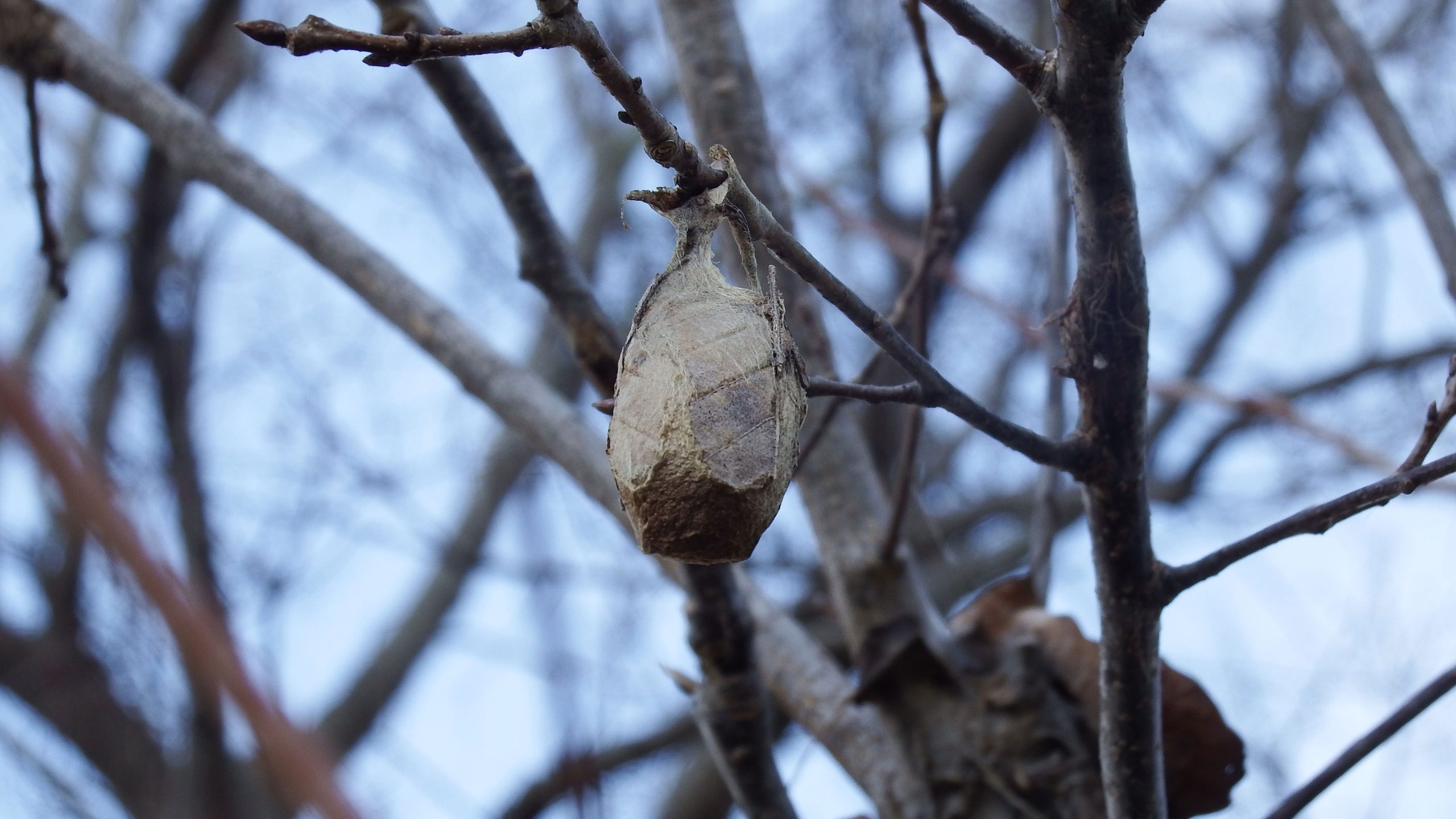
This is the first blog post I ever wrote. And I never got to publish it until now.
That’s because I have finally found another polyphemus moth cocoon. I found the first one (photo at the top of the page) two years ago and by the time the blog was up and running, the cocoon had disappeared.
And I finally found another one.
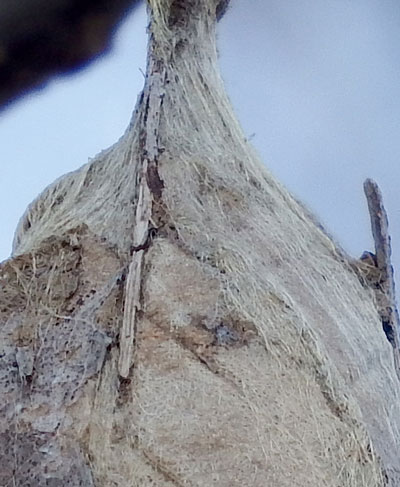
I’ve included photos of both cocoons, but neither does it justice. It is really huge. About an inch and a half long. This makes sense because Polyphemus moths are also huge. I’ve only seen two in my life. They are the kind of thing that, if you are lucky enough to see one, you don’t forget it. Below is a photo of the moth from the internet so you get an idea of what’s growing inside this thing. The wingspan of an adult Polyphemus is 4 to 6 inches!
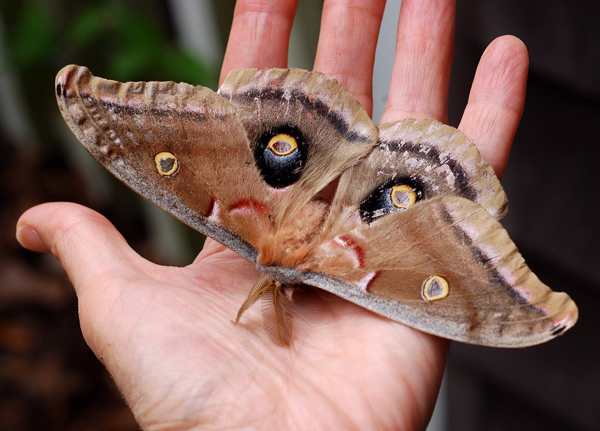
The cocoon is made of what looks like threads. That’s because Polyphemus moths are silk moths. They spin their cocoons out of silk. They aren’t the kind of silk moths we actually get silk from. Those moths have been inbred for 5,000 years to the point that they cannot mate on their own, have no color at all because they don’t need to avoid predators, find mates or anything, really. People tend to them all the time and their entire job is to make a cocoon. Once they do, they are often just boiled in the cocoon so they don’t mess up the silk. The pupa are then eaten. TMI, I know.
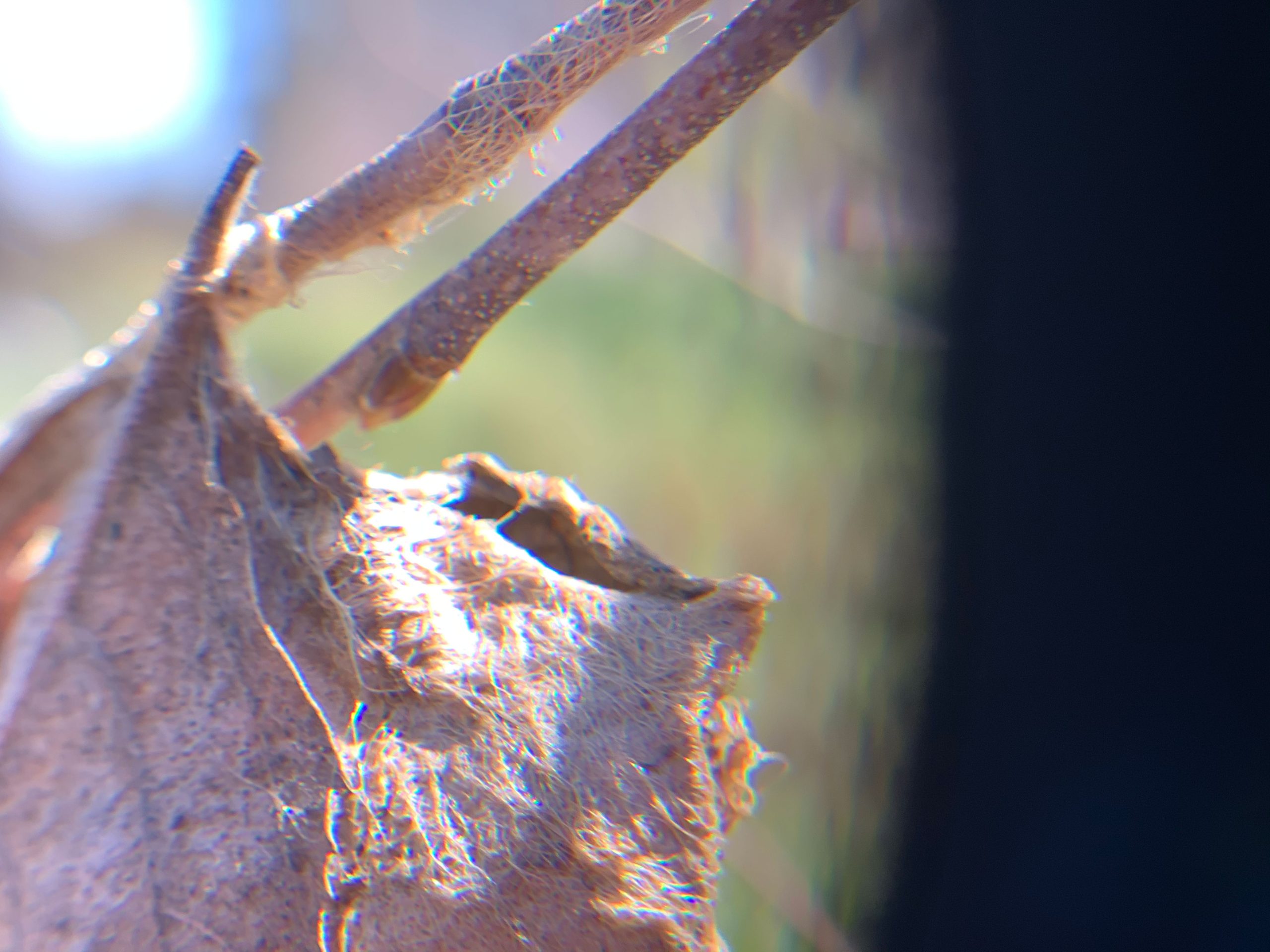
In this photo detail, you can see the threads that the cocoon is made from. I love how the threads wind around and around the twig from which the cocoon hangs.
When our wild silk moth hatches, his or her only job is to find a Polyphemus of the opposite sex and make the next generation. And they have to do it in a huge hurry. They don’t have working mouths, so eating isn’t an option. They will be dead within a few days.
This sounds like the plot of a tragic opera, but that’s only if you think of the moth hatching as equivalent to being born. It isn’t. This moth has already been around for months. First a few weeks as an egg, which is probably kind of boring, but once the egg hatches, a life of feasting awaits. This moth (and every other moth or caterpillar) has enjoyed a month or two doing nothing at all but eating. She ate so much and grew so fast that the only way to keep up was to shed her skin five times. And, really fun, she looked different almost every time she did it. For Dr. Who fans, this might sound familiar.
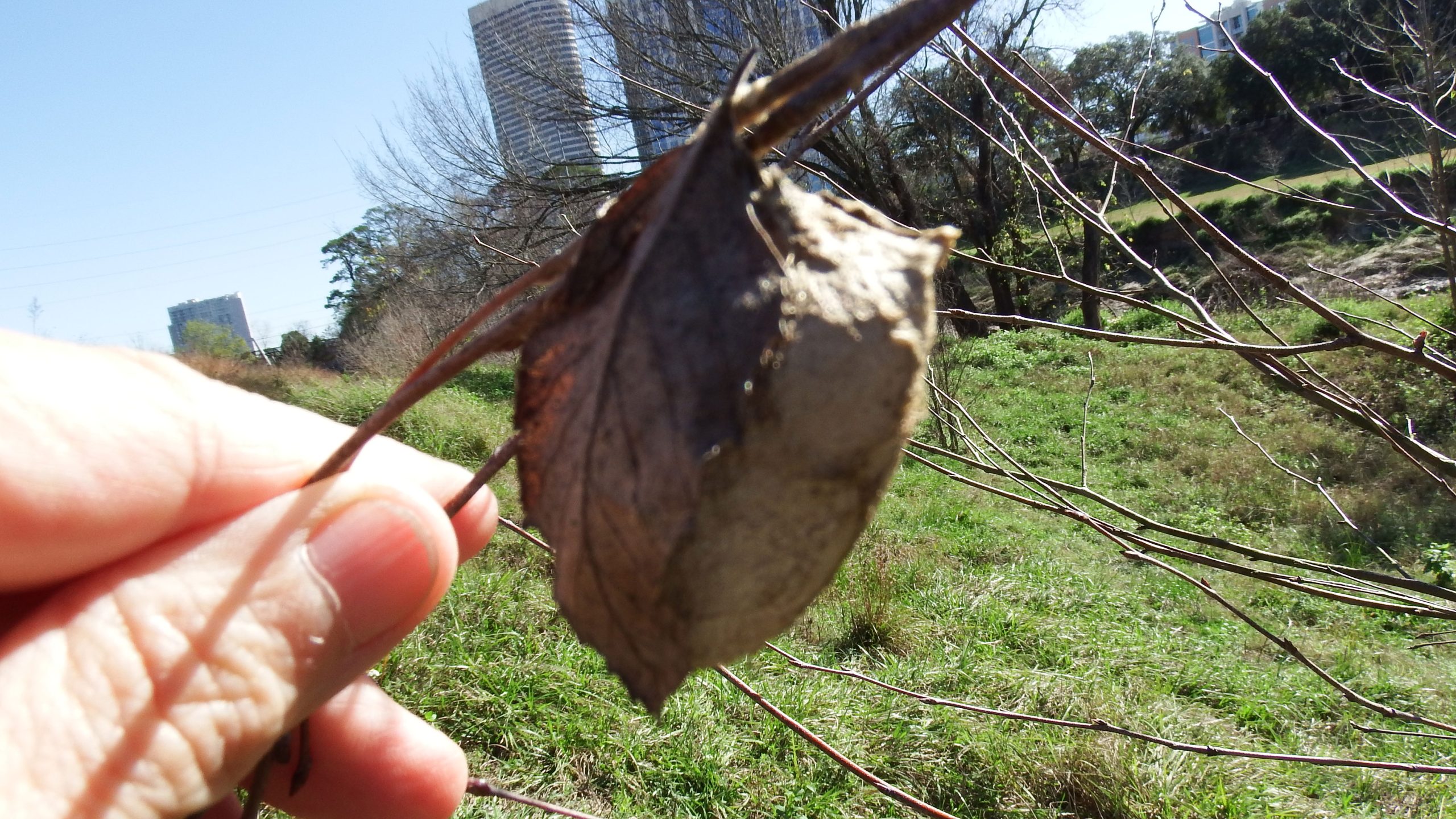
I hate that the only thing in focus here is my hand, but it does give you a good idea of how big this thing is.
Right now, she is a pupa. The caterpillar has dissolved and the cells are reorganizing into a moth. Once she emerges, in her official winged uniform, she will have to work for the first time in her life. By this point, not having a mouth might be a godsend. She has got to be tired of eating by now. It’s basically all she has ever done.
Given the fact that caterpillars aren’t great travelers, I have to assume this one spent its entire life on this tree or very close by. Favored plants include oak, hickory, elm, maple, and birch; caterpillars will also eat apple, beech, ash, willow, linden, rose, grape, and pine. I think it’s on a small river birch, but until it leafs out, I won’t know for sure.
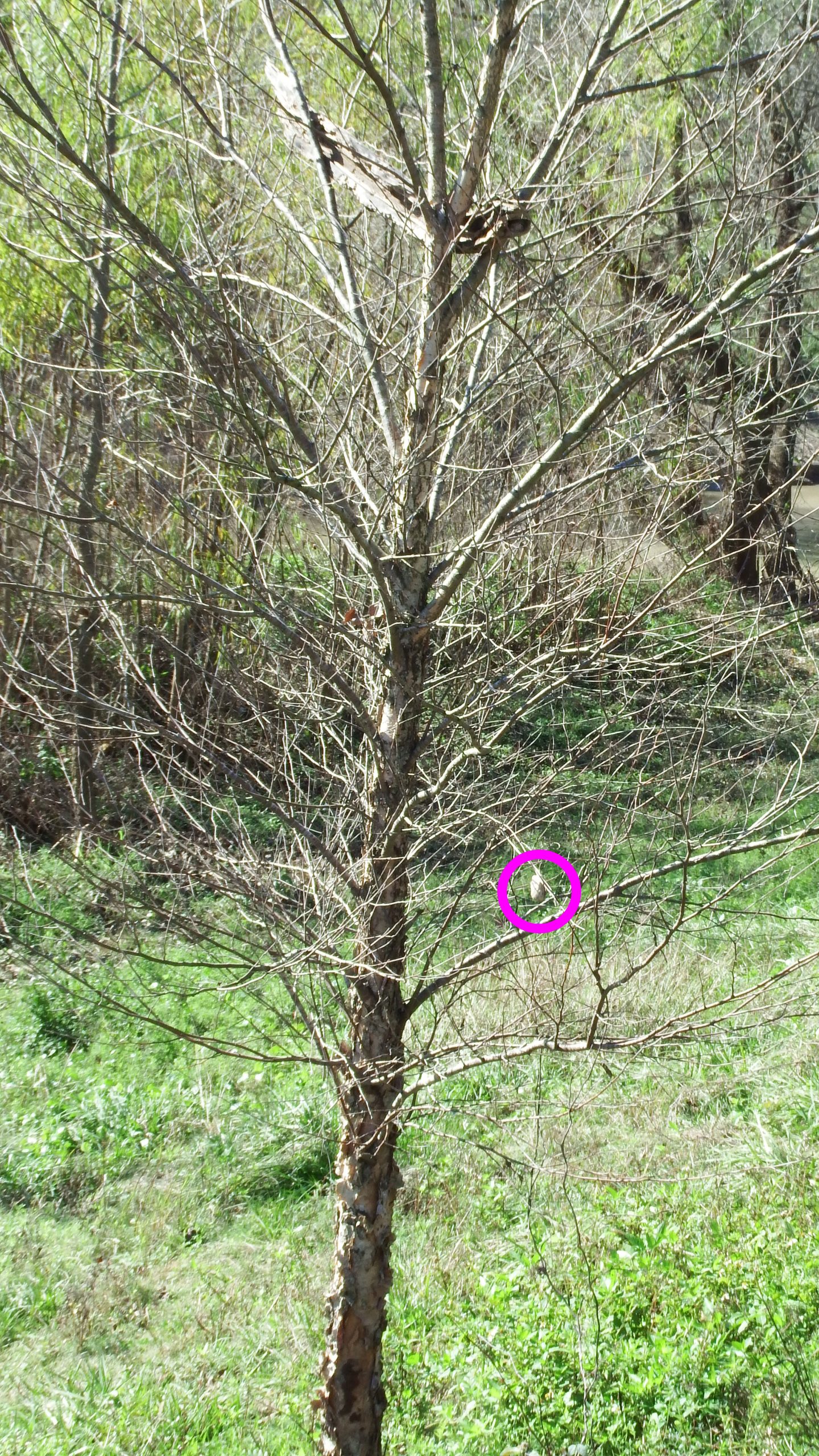
And if you are concerned that our moth might freeze to death during the cold snap, not to worry. Polyphemus moths regulate the freezing temperature of their pupa based on how many hours of sunlight were present when the transformation began. So, moths pupating during the shorter winter months come pre-loaded with antifreeze.
This cocoon can’t be seen easily but you can find it on a tree a few feet from the path on the western edge of the Miracle Prairie. The cocoon is remarkably light. I don’t know if this means that something has gone wrong, if the moth has already left (is that a hole at the top?) or if things are going swimmingly.

